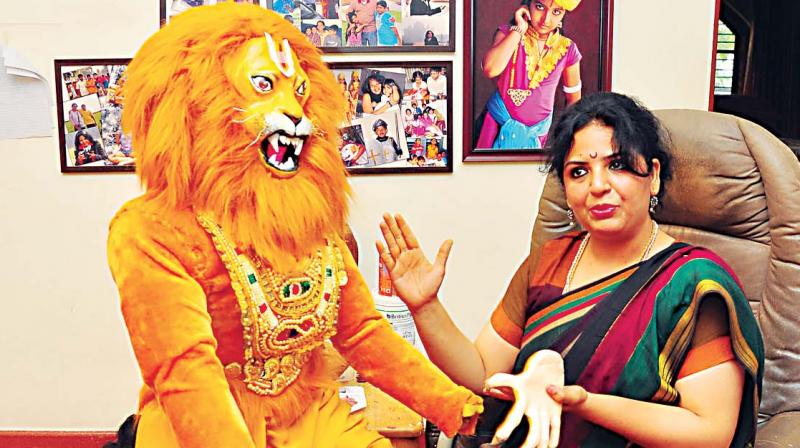Trial by fire: saving pottery from going to pot

"While the truth is that all is clay..." goes a line in the Mundaka Upanishad. And when Chitra Rao she sees in her wheel the power of the five elements. What rose from a wish to acquaint her children with Hindu tradition gave Chitra's passion for pottery new wings. She gives Aksheev Thakur a tour of her many creations as she explains a learning process that took her from the corridors of government to the potters of Maharashtra
The Kumbhakaaraha pottery studio stands amidst the suburban charm of Banashankari and the potter herself, Chitra Rao, awaits us at the door. Well over 60 varieties of clay creations have been lined up but Chitra explains that these are just the few that have survived the process! “If we make 10 pieces, eight go for firing. Out of these, about three survive. The time and energy that is put into pottery or handcrafted items is immense.”
In 2006, Chitra returned to India from the U.S. with her family and wanted, at the time, to raise her children with traditional Indian values. This found itself blending well with Rao’s own passion for pottery and mask-making, hobbies that were about to take flight.
A science student with an inclination for the crafts isn’t highly unusual, but professing the art with such passion is always rare. Chitra laughs, saying, “I was always passionate about pottery and learning its intricate details. I have a spiritual bent and within this medium, I see the five elements (Panchabhutas) at play. This art form calms me down.”
Chitra went on to learn pottery in the city at a workshop conducted by the Government of Tamil Nadu. Her first exposure to the art form itself, however, took place when she visited the villages of Maharashtra, which are rife with potters.
“I used to watch them and they patiently taught me the art. They are willing to teach you everything. Unfortunately, with the advent of Chinese products that are sold for very cheap rates, the potters have taken up the menial jobs in the city,” she says sadly.
Now, her fire lies in keeping the art form alive. Youngsters pursuing design and architecture courses also approach her to learn the traditional Indian art. Her work is also in high demand during festival seasons like Deepavali, which she attributes to the different styles and ideas used in her products. The lamps and small works of pottery, attached to bell-shaped rings and lined up in the garden are beautiful, underlining her assertion.
Holding up a work shaped like a dog, she explains that ideally, mud used in pottery should come from a pond. “The mud should have been in the pond for a minimum of five years. Only then is it suitable for pottery making,” she explains.
Soon, Chitra leads us to an adjoining room. Here, 10 masks, based on mythical characters, are being made. She chuckles at the volley of praise that comes for her skills, saying, “This is one of those art forms that I learned on my own. It took me a while to perfect it.”
The masks are made of wood powder and each takes a minimum of three-weeks to complete. Chitra’s fascination for portraits instilled in her an interest in mask making, too. This isn’t all-too surprising, either, considering her eclectic family: her daughter is a painter and practicing musician, her son lives making videos and her husband quit a lucrative job to practice agriculture.
While climbing the stairs, Chitra points at her Navaratri’s preparation where a sculpture of Narasimha and Hiranakashipu – the scene is clearly still a work in progress, once complete, it will depict a mythical scene in its entirety.
“I use pipes and once even used my son’s cricket pad to make a crocodile. Every day we come up with an idea and this is something I do alone and does not take anybody’s help,” Chitra adds.
On being asked who critiques her final products, the hand’s gesticulation takes us to dinner table which she says becomes a discussion of her final products.
“Right from colour to appreciating my work, it’s all talked about at the dinner table. My son takes videos of my pottery and my daughter who is a painter, designs the eyes of the masks I make,” she explains.
However, Chitra does not want to enforce her passion on her children and wants them to pursue their ambitions. But she is always to ready to pass on the art to anybody who wants to pursue and take it forward.

